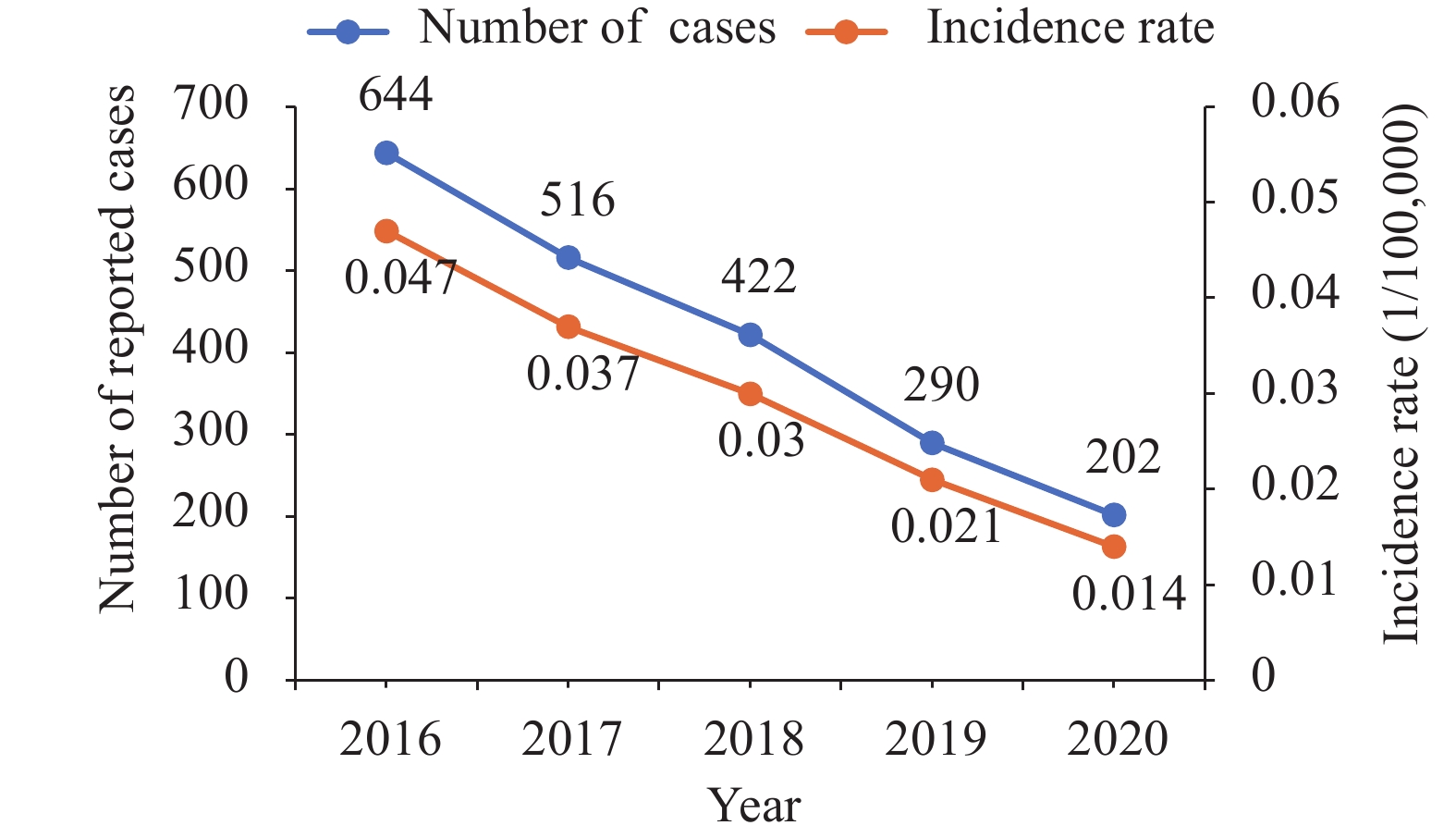2021 Vol. 3, No. 39
Rabies is a fatal zoonotic infectious disease that poses a serious threat to public health in China. Since 2005, a National Animal Rabies Surveillance System has been operating to understand the rabies situation in animals in China with a view to control and eventually eliminate dog-mediated human rabies.
From 2010, the brain tissues of dogs, livestock, and wild animals showing rabies-like clinical signs were collected and tested by the National Reference Laboratory (NRL) for Animal Rabies to analyze the epidemiological characteristics of rabies, including animal species, geographic distribution, and transmission sources. Over the same period, clinically suspected animal rabies cases were collected by Animal Disease Control Centers through the National Animal Disease Monitoring Information Platform (NADMIP) and then reported in the Veterinary Bulletin.
During 2010–2020, 170 of 212 suspected animal rabies cases were submitted to and confirmed by NRL as rabies virus-positive. Of these confirmed cases dogs, especially free-roaming and ownerless dogs in rural areas, were major transmission hosts (71/170). A total of 51 infected dogs attacked humans with 45 biting more than one person. The dog cases were reported all year round, but with significantly more in spring and summer. The majority of livestock rabies cases (70/80) being caused by rabid wild foxes in Xinjiang and Inner Mongolia revealed that foxes play a pivotal role in animal rabies epizootics in the north and northwest of the country.
Dogs were the main transmission sources of rabies in China, and along with the recent increase of rabies in foxes and other wildlife, presented an increasing threat to livestock and public health.
The epidemiological characteristics of human rabies in China in 2016–2020 were analyzed in order to provide the scientific basis for the formulation of the prevention and control policy of rabies at next stage.
The data of China’s National Notifiable Disease Reporting System (NNDRS) from 2016 to 2020 were collected and analyzed by using a descriptive epidemiology method.
A total of 2,074 cases of human rabies were reported from 2016–2020 in China, there were year over year decreases in total number of cases. Human rabies appeared throughout the year, among which the highest in incidence happened from August to October, while March and December months were months in which the epidemic was weakest.
Though decreases were observed for human rabies in China, further steps should be taken to maintain these results. Management should be strengthened and the immunity of dogs should be prioritized to control this situation from the source. In addition, all reported cases should be monitored and reported to achieve the accurate prevention and control.
Rabies remains a serious public health problem in China. The only way to prevent the fatal disease was through timely and adequate post-exposure prophylaxis (PEP).
Among all the 126,133 cases visited Tianjin PEP clinics during 2020, more than 90% of the patients were injured by domestic dogs or cats, and about 70% of the animals received vaccination. Most outpatients have knowledge of rabies and show high compatibility with PEP.
To better control rabies, we need to pay more attention to people who lack knowledge of rabies and help them gain awareness of PEP.



 Subscribe for E-mail Alerts
Subscribe for E-mail Alerts CCDC Weekly RSS Feed
CCDC Weekly RSS Feed
